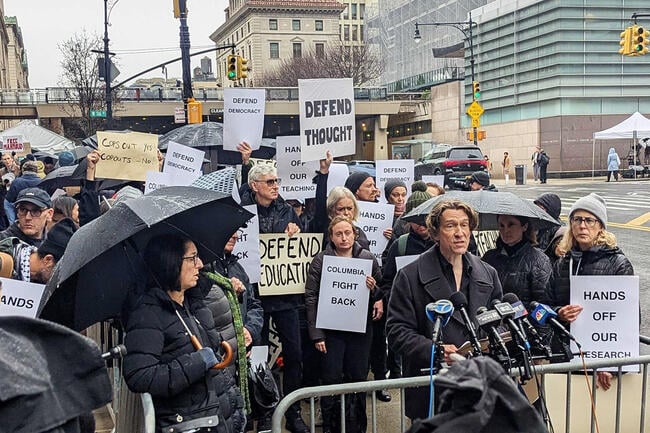On March 24, 2025, the gates of Columbia University in New York City became the stage for a dramatic showdown. Faculty, students, and supporters gathered in the rain, banging drums and chanting slogans like “Long live the intifada” and “Columbia, fight back.” This wasn’t just another campus protest—it was an “emergency vigil” organized by Columbia professors to push back against what they see as an attack on their university by the Trump administration. The stakes? Academic freedom, federal funding, and the future of higher education in America.
Trump’s Demands Shake Columbia
The unrest stems from a bold move by the Trump administration earlier this month. They yanked $400 million in federal research grants from Columbia University, claiming the school mishandled protests against Israel’s military actions in Gaza. To get that money back—and secure billions more in future funding—the administration demanded nine major changes to Columbia’s policies. These include stricter rules on protests, a review of its Middle Eastern studies department, and even adopting a new definition of antisemitism. The university also agreed to boost its Institute for Israel and Jewish Studies to promote “intellectual diversity.”
Columbia’s interim president, Katrina Armstrong, caved to the pressure, announcing the changes on March 21. U.S. Education Secretary Linda McMahon praised the move, saying on CNN’s “State of the Union” that Columbia was “on the right track” to keep its students safe and stamp out discrimination. But for many on campus, this felt like a betrayal.
Faculty Fight Back
On Monday, over 100 people rallied outside Columbia’s main gate at 116th Street and Amsterdam Avenue. Professors like Virginia Page Fortna from the political science department and Michael Thaddeus, a mathematics professor and vice president of the Columbia chapter of the American Association of University Professors (AAUP), led the charge. They held signs reading “Defend Democracy” and “Defend Teaching,” accusing the university of bowing to an “authoritarian regime.”
Risa Lieberwitz, a labor and employment law professor from Cornell who joined the protest, warned that the Trump administration is using Columbia as a warning to other universities. “They’re attacking Columbia to coerce others to fall in line,” she said, adding that one of her international students is now being targeted by immigration authorities. Meanwhile, Anya Schiffrin, a Columbia professor specializing in media and communications, spoke at the vigil, urging resistance.
The protesters didn’t stop at speeches. They took to social media, calling for students and staff to skip classes and work, and even to wear masks in defiance of a new mask ban on campus. For them, this was about more than just Columbia—it was about protecting the soul of higher education.
The Cost of Compliance
The lost $400 million wasn’t just a number—it funded over 150 research projects that tackled everything from cancer treatments to pollution’s health effects. Melanie Wall, a biostatistics professor, called the cuts a “huge waste of resources,” arguing that halting these studies midstream hurts everyone, not just Columbia. She’s personally tied to eight National Institutes of Health grants that got axed.
Tim Frye, another political science professor, urged the crowd to build alliances with alumni, businesses, and other universities to fight back. “We’ve been silent too long,” he said, insisting that faculty must counter the narrative that paints them as the enemy.
A Warning for Higher Education
The AAUP, which organized the vigil, sees Columbia’s situation as a chilling precedent. Executive Director Mia McIver declared, “Targeting Columbia is meant to strike fear into students, teachers, and researchers everywhere, but we are unafraid.” Experts agree that this could signal more federal meddling in universities nationwide. The federal antisemitism task force, which pulled Columbia’s funding, is already investigating nine other colleges and promises “swift action” if they don’t comply.
Columbia itself tried to strike a balance in its response. A spokesperson told Fox News Digital, “We respect vigorous debate on campus about academic freedom and protest,” while emphasizing their commitment to fighting antisemitism and discrimination. But for the protesters, that’s not enough—they see the university’s compliance as a surrender.
What’s Next?
As drums echoed outside Columbia’s gates, the message was clear: this fight is far from over. Faculty and students are digging in, determined to protect their right to teach, learn, and speak freely. Meanwhile, the Trump administration seems ready to double down, with officials hinting that Columbia’s compliance is just the beginning.
For now, Columbia stands at a crossroads—caught between federal pressure and its own community’s defiance. The outcome could shape not just one university, but the future of academic freedom across the country. As Frye put it, balancing safety and free speech is “really hard, but that’s the job.” The question is: who gets to decide how it’s done?
